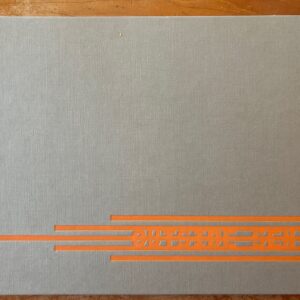JTF (just the facts): A total of 51 black-and-white and color photographs, framed in white and matted/unmatted, and hung against white walls in the main gallery space, the side room, and the entry area.
The following works are included in the show. Friedlander’s prints are uneditioned:
- 16 iris prints on rag paper, 1956/later, 1958/later, 1960/later, 1960s/later, 1963/later, 1966/later, 1967/later, 1968/later, 1969/later, 1971/later, sized roughly 10×15, 15×10, 11×11, 15×15, 16×16, 17×17, 20×13 inches
- 22 gelatin silver prints, 1955/later, 1956/later, 1957/1980s, 1957/later, 1958/1970s, 1958/later, 1959/later, 1960/1970s, 1960/later, 1982/1980s, sized roughly 8×11, 8×12, 9×13, 12×18, 13×9, 15×14, 15×15, 18×12 inches
- 13 pigment prints, 1956/later, 1958/later, 1959/later, 1960/later, 1968/later, 1969/later, sized roughly 10×15, 12×18, 13×18, 15×15, 18×18 inches
(Installation shots below.)
A monograph of this body of work was published in 1998 by DAP and is now out of print.
Comments/Context: If there is one common theme that we come back to again and again (like a broken record) as we think critically about photography of all kinds, it’s that the artistic vision of the photographer nearly always matters more than the subject matter of his or her pictures. And if there is one shining example of this truth to be singled out from the long history of the medium, it just might be Lee Friedlander.
Over the past decade or two, we have written about Friedlander’s work extensively, as seen in gallery and museum settings as well as in photobook form, and we have explored his unique approach to more subjects than we can count, including street scenes, interiors, landscapes, portraits, self-portraits, nudes, still lifes, images taken from cars, images of mannequins and storefront windows, and even fashion shoots. In each and every case, Friedlander has found a way to insert his own quirky brilliance into the pictures, often using sophisticated framing techniques and compositional interruption to recalibrate the way we see whatever he’s seeing. His photographic eye is altogether unique and unmistakable, and he’s restlessly and prolifically applied that vision to the world around him for nearly seven decades.
This gallery show pulls us back to the very beginning of Friedlander’s career, when he was just starting out as a photographer in his early 20s. His early interest in music led him to make images of jazz musicians in Los Angeles, and leveraging some of those first pictures, he found his way into a job as the house photographer for Atlantic Records in New York. The show gathers together his photographs from that early period and on into the next decade or two, offering us a tight survey of Friedlander’s vision of American music.
Of course, in those days, Friedlander was essentially working in a commercial context, documenting gigs or shooting images for album covers, and so he couldn’t entirely allow his own photographic vision to overwhelm the imagery. What’s fascinating about this show is how we can see snippets of Friedlander’s mature artistic style peek through in many of the pictures, like aesthetic energy that he couldn’t quite keep bottled up. Music fans and historians will of course be astounded by the range of stars Friedlander photographed over the years, but in our case, it’s these flashes of compositional style that are the most exciting to discover here.
Friedlander seems to have always been interested in pushing on the edges of conventional aesthetics, and so in some of these portraits, he gets in closer than we might normally expect, as though he has deliberately leaned in just a bit too far. This effect pushes right up against a dour Carl Perkins, looks sidelong at Miles Davis (an image which became the cover of Davis’ 1969 Greatest Hits album), and seems to butt heads with a serious Charles Mingus (instead of the closed eyes version which graced Blues and Roots). In a couple of other cases, Friedlander’s subjects have similarly closed their eyes, either in resting quiet (in the case of Chet Baker) or while playing (for Yusef Lateef), so his unexpected closeness is somewhat less intrusive.
In a variant of this approach, Friedlander not only gets up close, but he comes up from underneath his subjects, creating distortions of perspective that smartly unbalance the pictures. Johnny Cash strums his guitar, but from Friedlander’s low vantage point, the guitar looms up large and the singer’s head seems to have shrunk. The same effect happens with Lefty Frizzell, who poses outside on the ground with his guitar, his yellow suited leg dominating the picture. The distortions get even wilder with Ruth Brown and Solomon Burke, who are both seen from under their chins. And the perspective then twists when Friedlander gets to Aretha Franklin, her head turning and bobbing in a series of images capturing the ecstatic energy of her singing.
Later in his career, Friedlander would become known for his innovative use of visual interruption, and we can see some of the seeds of that interest in a few of these portraits. It starts subtly in the mid 1950s, with a piano edge reaching in front of Duke Ellington and a blurred body getting in front of Bud Powell, but soon the techniques get more radical. Roland Kirk is seen playing two instruments at once (an inverted variant of the image on the cover of The Inflated Tear), the bend of a saxophone jutting into the foreground. Miles Davis plays his trumpet, and the elongated instrument just misses poking us in the eye. And all of Friedlander’s compositional experiments come together in a single picture of John Coltrane from 1960, who is not only seen up close and from below, but through the jumbled metal of his microphone stand and saxophone; a variant of this image later graced the cover of Coltrane’s album Giant Steps.
As seen in the breezy openness of Luhring Augustine’s new Tribeca space, these Friedlander portraits feel surprisingly fresh and vibrant, particularly many of the ones in color. What this tells us is that Friedlander’s eye was becoming surprisingly unique even in these early days, consistently turning standard commercial shots into durably unexpected photographs. As a group, the pictures feel like an active work in progress, the eye of a master just starting to recognizably coalesce.
Collector’s POV: The prints in this show are generally priced between $6500 and $12500 each, with a few of the more vintage prints at $14000 each. Friedlander’s work is routinely available in the secondary markets, with recent prices at auction ranging from roughly $2000 on the low end to as much as $80000 for his most iconic vintage prints. In 2015, a selection of Friedlander’s little screens (38 prints in all) sold for $850000.


























